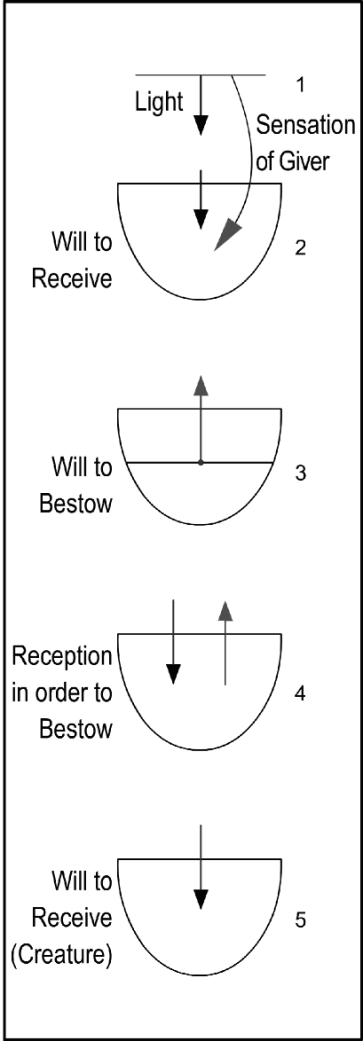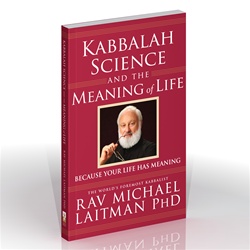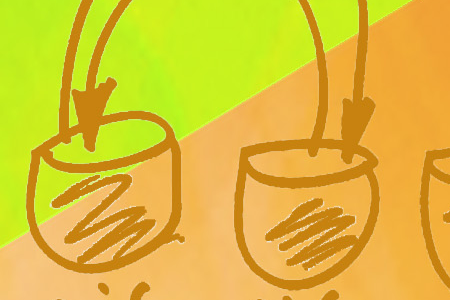Where Does the Desire to be Like the Creator Come From?
There is a Creator who wishes to give. This is the Root, or Zero Phase. In order to give, He must have someone to give to, and because the Creator wants to give, He creates a Kli that receives the “gift,” meaning the Creator gives to the Kli. This is State One.
For this to occur, the receiver must first want the pleasure. If I build in you a desire for something and then give you what you want, you will not enjoy my gift because this is not your own desire. You must feel that it is your own desire before you can define it as “pleasure.” Thus, at the end of State One, the creature begins to sense the Giver and His nature.
The will to receive evolves by sensing the Giver (State One), and consequently wanting to be like the Giver (State Two). In that state it becomes worthwhile for the creature to be like the Giver (State Three). However, this is only a phase in the formation of the will to receive, and the creature is not really aware that it is receiving anything.
In fact, the creature isn’t aware of any of these observations; they are merely phases in the evolution of the crude will to receive. This crude desire must still descend, formulate, and drift far from the Creator until it stops sensing Him altogether. It must descend to the level of our world, and only then will it sense the desire in it as its own independent will (State Four). In this way, it will believe that it’s free and does not submit to the Creator’s guidance.
In this state, when an individual in our world wants to discover the Creator, the desire will seem to come first. Thus, a person will be able to give to the Creator out of free will, and this will constitute one’s form of free giving. You might say that from the perspective of the Creator it is nothing but a fantasy, and that the Creator really runs the show. Although this is true, it does not diminish the fact that from the perspective of the creature, the concealment of the Creator enables the creature to feel independent.
How the “Desire To Enjoy” Relates to Wanting to Give to the Creator
At the end of State Three, the creature decides to receive from the Creator in order to resemble Him. Although in State Two the creature already has a desire to give, this is still not its own desire; this is not a “Creator-like” desire, as in State Three, but a desire that stems directly from the Creator.
Let me give you an example to explain what I mean. Assume that I am serving you a piece of cake. You might say that you don’t know what this is, you have no initial craving for such a cake, but then I convince you that you really should try it because it’s a fantastic cake. In this process I give you both the desire and the satisfaction, the fulfilling of the desire.
Therefore, there is an evolution in the transition between the stages where “this thing” (the craving) suddenly “wakes up” and becomes aware of itself. It is as though it begins to converse with the Creator. This evolution results from an interior collision in the creature between the two factors—the pleasure and the Giver of the pleasure. In reality, all that exists is these two elements.
State Three also marks the awakening of a new desire in the creature: envy toward the Creator. In this respect, envy is a positive and useful element because it propels us to evolve further.
Finally, at the end of State Four, the creature feels that it is bringing pleasure to the Creator. Thus, it considers itself holding the same status as the Creator, and feels the pleasure that comes with having achieved the Creator’s status, the pleasure from giving, from being a creator.
This state of being creates in the creature a desire to enjoy that status, relish in this pleasure. Because this desire does not come to the creature directly from the Creator, but evolves as a result of its own actions, it is considered a new desire, one that we ascribe to the creature. This is what we refer to as “the desire to enjoy” (Figure 4).

Why Shame Is Necessary to Resemble the Creator
In this last state, the creature receives pleasure from sharing the Creator’s status, and indulges in it. Thus, the creature indulges in two pleasures: the pleasure that comes from the Creator, and the pleasure that comes from sharing the Creator’s status. This state of being is called Ein Sof (No End), and refers to a state where there are no limitations on the desire.
This does not refer to distance, time or space in the physical sense. Rather, this is an observation that pertains to the nature of the desire, meaning that the desire itself is unlimited.
Upon receiving these pleasures, the creature finds once more that there is a source of the pleasure. It discovers that the Giver is the source of the pleasure, and feels itself as the receiver. This time the sensation is valid because the will to receive in this state is the creature’s own, not one that came to it from the Creator.
Consequently, the creature feels that it wants to escape its own desire. It shuns it, and does not want to belong to its own desire any longer. The rejection that it feels toward its own desire induces it to “restrict” it (avoid using it). The desire is still there, but now the creature refrains from using it. Hence, the sensation of fulfillment—the pleasure—ceases.
Having remained with a craving, the creature resolves to reach the status of the Creator, the only status that the creature now wishes to have—that of the Giver. It senses that it must give to the Creator without receiving any reward for itself. From this point onward, all its actions will be aimed solely to attain this goal.
 “Why Everyone Secretly Wants to be Like the Creator” is based on the book, Kabbalah, Science and the Meaning of Life by Dr. Michael Laitman.
“Why Everyone Secretly Wants to be Like the Creator” is based on the book, Kabbalah, Science and the Meaning of Life by Dr. Michael Laitman.

